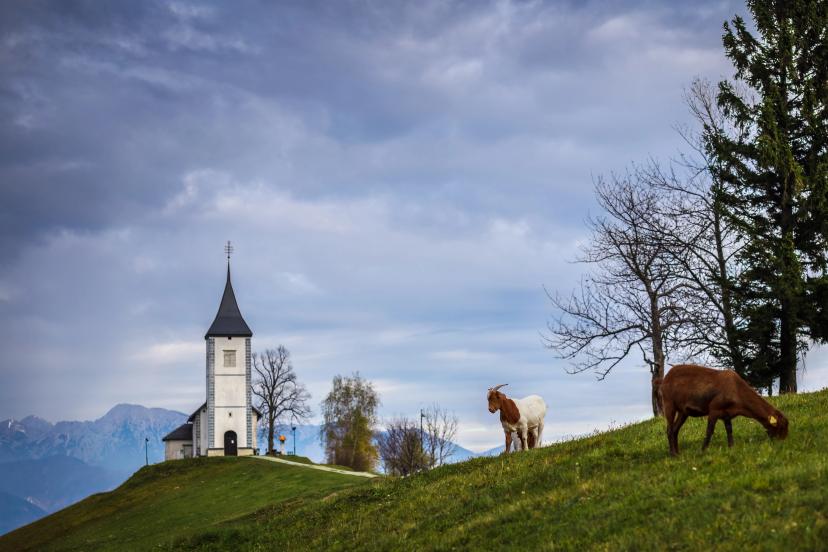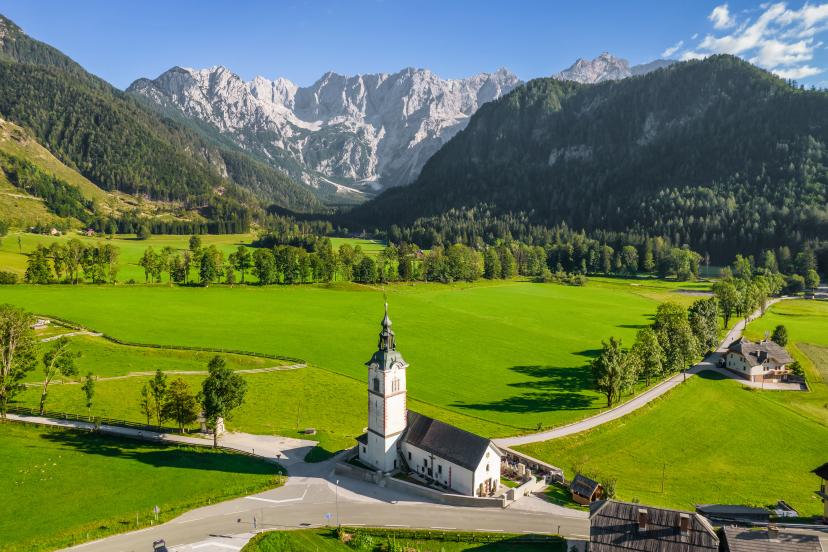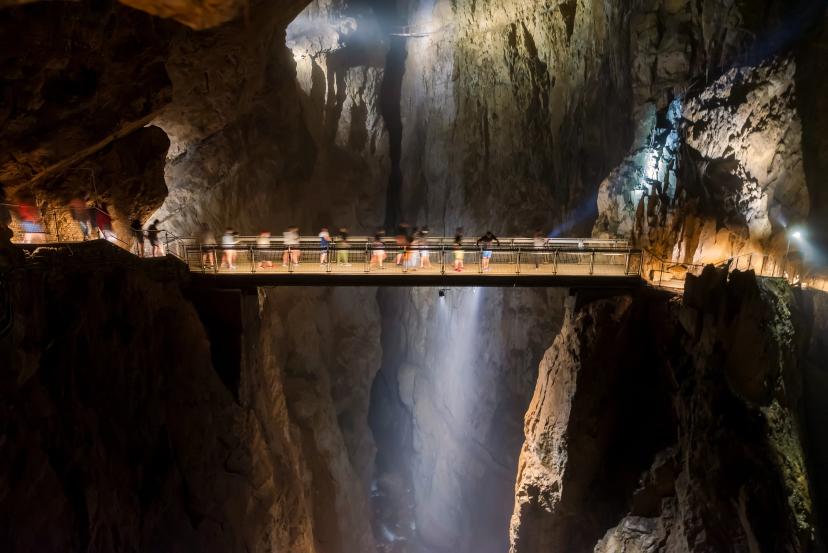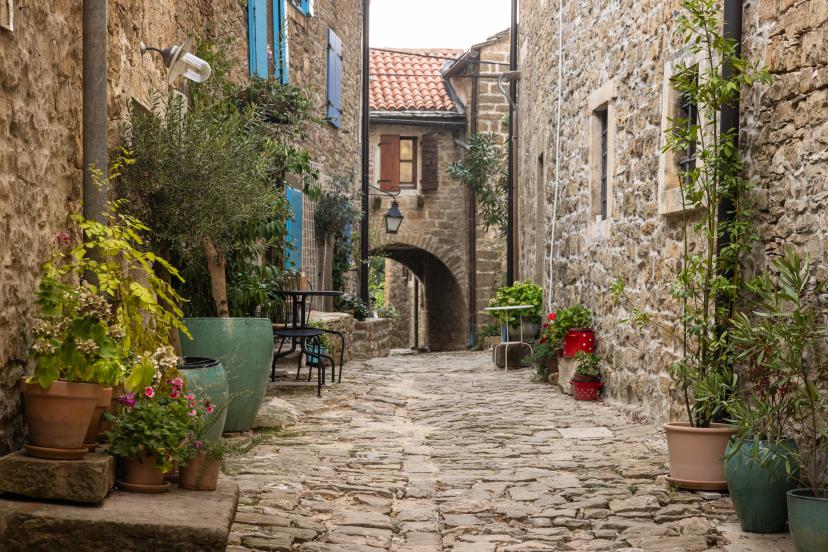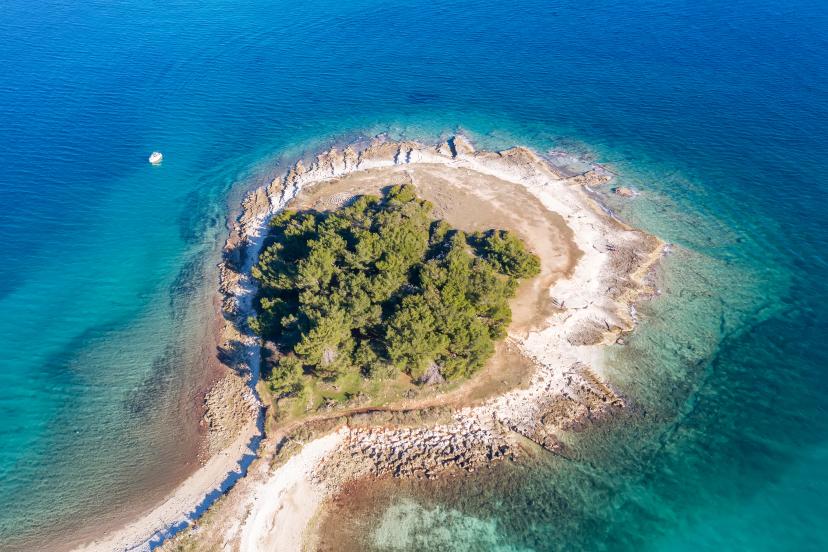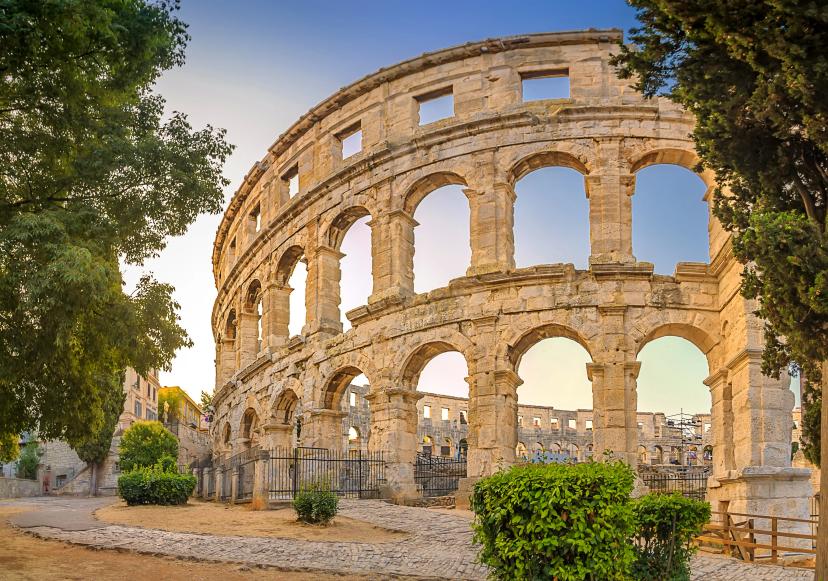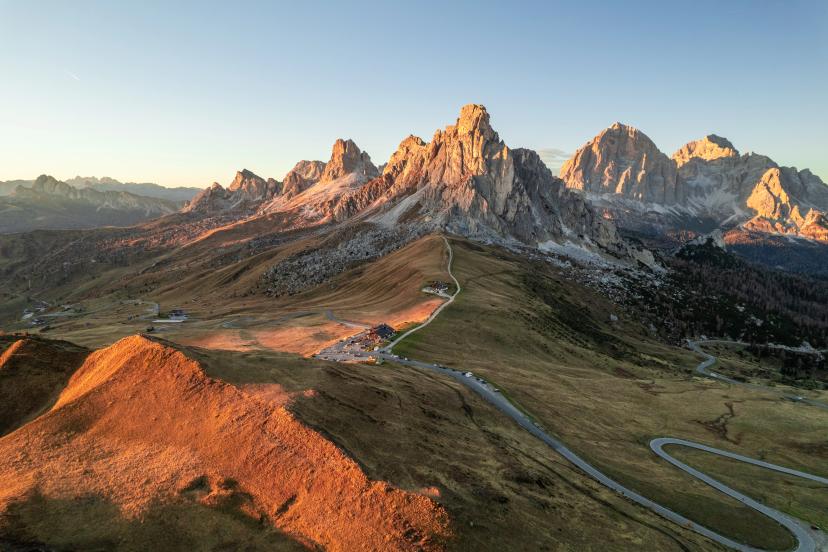Sehenswerte Orte in Slowenien
Die ultimative Sehenswürdigkeitenliste für Slowenien: Nationalparks, Weinregion, Adriaküste und mehr. Entdecken Sie die besten Orte, die es nach Regionen zu sehen gibt.
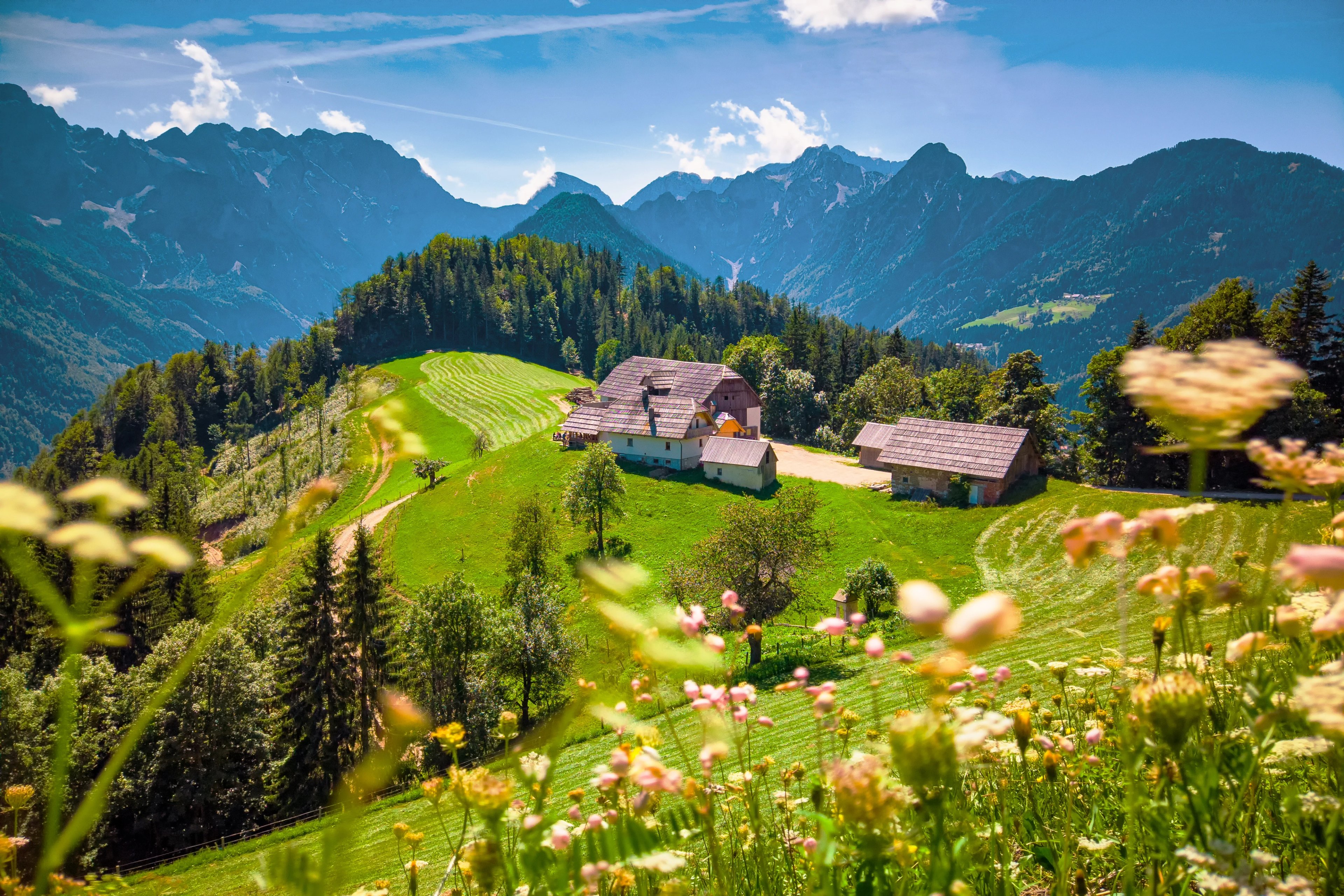
Slowenien mag klein sein, aber es bietet eine der vielfältigsten Landschaften und Kulturerben Europas.
In einem Land finden Sie alpine Gipfel, die fast 3000 m hoch sind, smaragdgrüne Flüsse, uralte Wälder, römische Ruinen, venezianische Städte und Höhlen, die sich kilometerweit unter der Erde erstrecken.

Wir haben eine Slowenien To-Do-Liste von Orten zusammengestellt, die man sehen sollte, unterteilt nach Regionen. Was sollte darauf stehen?
Alpen & Julianische Alpen Slowenien
Im Norden zeigt Slowenien seine dramatische alpine Seite. Hohe Gipfel nahe 3.000 m, kristallklare Seen und tiefe Täler prägen diese Region, in der die Julianischen Alpen und der Nationalpark Triglav eine Landschaft von auffallenden Kontrasten schaffen.
Hier finden Radfahrer legendäre Bergpässe, smaragdgrüne Flüsse und klassische Alpen-Dörfer—eine unvergessliche Kulisse für Fahrten durch einige der atemberaubendsten Landschaften Europas.
Wollen Sie es aus erster Hand erleben? Unsere Alpen-Adria-Tour, Sloweniens Fahrt der Champions und Julianische Alpen Radtouren zeigen das Beste dieser spektakulären Bergregion.
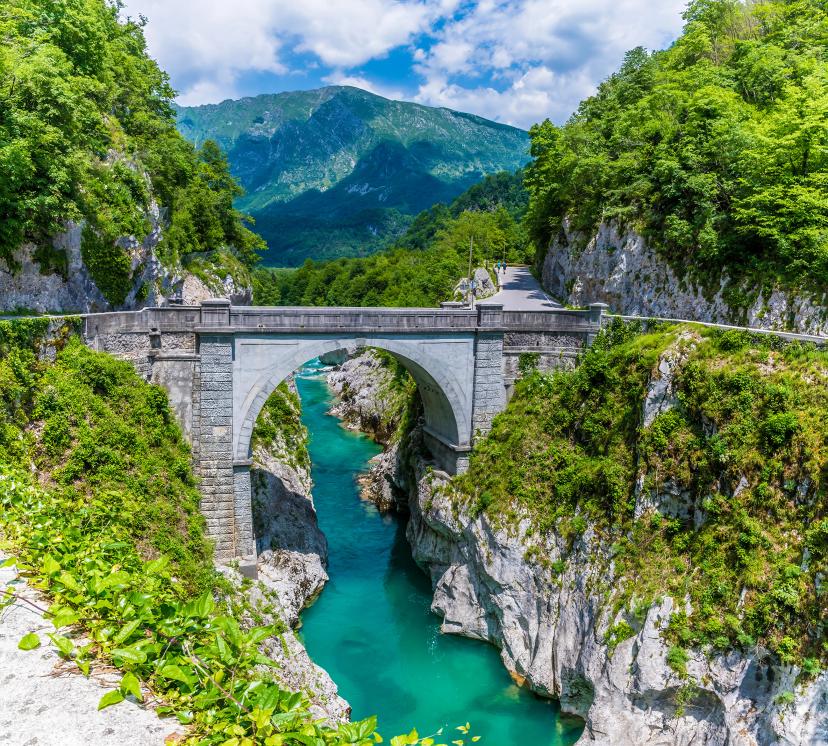
Napoleon’s Bridge
Built in 1750 and named after Napoleon’s troops who crossed it in 1797, this single-arch stone bridge spans about 55 m, rising 22 m above the emerald Soča River. Rebuilt after World War I battles along the Isonzo Front, it remains a striking historic crossing with panoramic views of the Julian Alps.

Bleder See
Der Bleder See ist die bekannteste Sehenswürdigkeit Sloweniens und das aus gutem Grund. Der See entstand durch Gletscheraktivität, und in seiner Mitte befindet sich die einzige natürliche Insel Sloweniens. Seit dem 9. Jahrhundert steht eine Kirche auf dieser Insel, und heute läuten die Besucher noch immer ihre „Wunschglocke“. Die Anreise zur Insel erfolgt auf traditionelle Weise – mit einer Pletna, einem hölzernen Boot, das im Stehen gerudert wird, eine Methode, die für diese Gegend einzigartig ist.
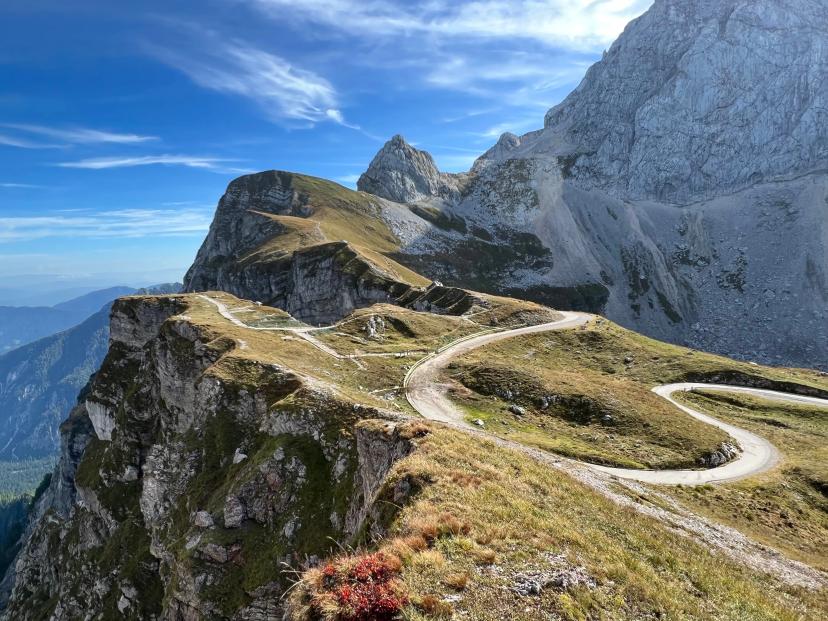
Mangart Saddle
Mangart Saddle, at 2,055 meters, is the highest road in Slovenia. The panoramic road leading up includes tunnels and dramatic switchbacks, ending just below Mount Mangart, Slovenia’s third-highest peak. It is a starting point for hikes, but even without climbing further, the views stretch across Slovenia and into neighboring Italy and Austria.
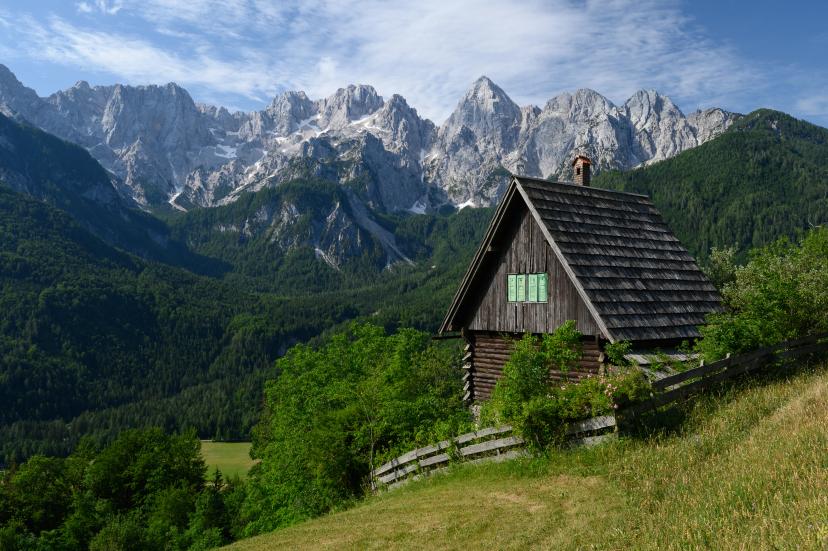
Julian Alps
Crossing north-west Slovenia and into Italy, the Julian Alps rise above 2,700 m and hold icons like the cobbled Vršič Pass with its 24 switchbacks. Glacial lakes Bled and Bohinj, turquoise rivers, and traditional alpine villages create dramatic scenery, while historic WWI routes add intrigue. Cyclists come for challenging ascents, sweeping panoramas, and some of Europe’s most rewarding mountain rides.
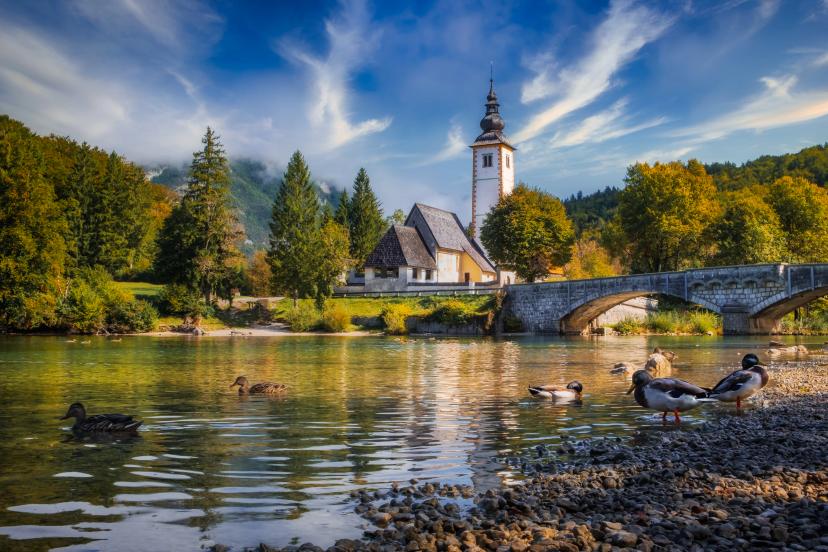
Lake Bohinj
Lake Bohinj is the largest permanent lake in Slovenia, 4.2 kilometers long and 1 kilometer wide, located inside Triglav National Park. It holds about 100 million cubic meters of water, fed by mountain streams and glaciers. Activities such as swimming, kayaking, and hiking around the lake are popular, but it remains much less developed than nearby Bled. A cable car leads from the lake up to Mount Vogel, where ski slopes in winter turn into hiking trails in summer.

Bled Castle
Perched on a cliff 130 m above the emerald waters of Lake Bled, this is Slovenia’s oldest castle, first mentioned in 1011. Its Romanesque walls, medieval courtyards, and Renaissance towers overlook one of Europe’s most photographed lakes, with panoramic views of the Julian Alps and the tiny island church below. Inside, a small museum traces a thousand years of history, while a wine cellar, chapel, and printing workshop bring the past to life.

Zajamniki Alpine Pasture
High above Lake Bohinj on the Pokljuka Plateau, Zajamniki is one of Slovenia’s most picturesque alpine pastures. A ribbon of traditional wooden herdsmen’s huts stretches across a grassy ridge at about 1,300 m, with sweeping views of the Julian Alps and Mount Triglav. In summer, meadows burst with wildflowers and cows graze as they have for centuries, offering a glimpse of authentic mountain life. Reached by quiet forest roads, Zajamniki is a peaceful stop for adventurers seeking classic Alpine scenery.
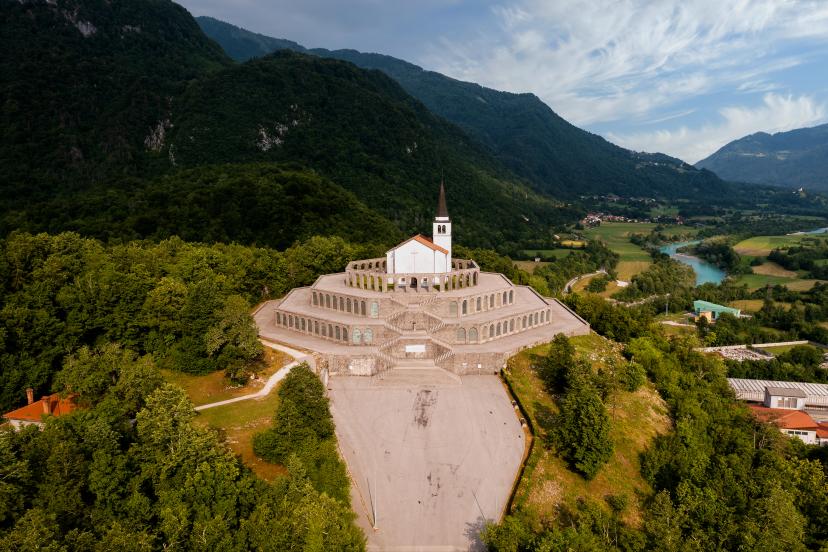
Kobarid Charnel House
The Italian Charnel House in Kobarid is a military ossuary built in 1938 to hold the remains of 7,014 Italian soldiers who died during World War I in the Isonzo Front battles. The circular structure is built around the pre-existing church of St. Anthony, and its inauguration was attended by Mussolini. It stands above the town of Kobarid and is part of the “Walk of Peace” heritage trail, which connects key sites from the front lines of the Great War across the Soča Valley.

Lake Jasna
Lake Jasna consists of two connected artificial lakes near Kranjska Gora. Built for tourism, they are surrounded by walking paths and overlooked by the peaks of the Julian Alps. A wooden viewing tower, a bronze statue of an ibex, and clear alpine water make it one of the most photographed spots in the region.

Dovžanova Soteska
Located near Tržič in northern Slovenia, Dovžanova Soteska is a narrow limestone gorge carved by the Tržič Bistrica River. It is a protected natural monument and internationally known geological site, showcasing 300-million-year-old fossils and rare rock formations from the Paleozoic era. A scenic trail with bridges and interpretive panels follows the river through steep cliffs and natural rock arches, offering visitors both striking alpine views and a glimpse into deep geological history.

Pokljuka Plateau
Rising 1,200–1,500 m within Triglav National Park, Pokljuka is Slovenia’s largest high plateau and a showcase of pristine alpine nature. Vast spruce forests, peat bogs, and open pastures dotted with traditional shepherd huts create a landscape of striking beauty and rich wildlife, with sweeping views of the Julian Alps and Mount Triglav.

Zelenci Nature Reserve
Zelenci is where the Sava Dolinka River begins. The water rises through porous chalk and sand, creating bright emerald pools that never freeze, even in winter. The reserve covers 15 hectares and is home to rare species of plants and animals, including orchids and kingfishers. A wooden boardwalk and viewing tower make the area accessible for visitors, offering views of the surrounding Julian Alps. The constant temperature of the spring water is about 6°C year-round.

Castle Kamen
Above Begunje na Gorenjskem stand the ruins of this 12th-century fortress, once guarding a key trade route through the Draga Valley. Built by the Counts of Ortenburg and later the Lambergs, it was damaged by the 1511 earthquake and uprisings, leaving striking stone walls and towers that now offer panoramic views of the Karawanks and Sava plain.

Soča-Tal
Das Soča-Tal ist berühmt für die smaragdgrüne Farbe des Soča-Flusses, der durch tiefe Schluchten und vorbei an Wasserfällen fließt. Die Gegend ist beliebt für Outdoor-Sportarten wie Rafting, Kajakfahren und Wandern und bietet eine Fülle von natürlichen Höhepunkten, darunter: die Großen Soča- und Tolmin-Schluchten sowie atemberaubende Wasserfälle wie Virje, Kozjak und den höchsten Wasserfall Sloweniens - Boka. Es ist auch ein Ort bedeutender Kämpfe des Ersten Weltkriegs, die durch eine Vielzahl von Museen und den Friedensweg in Erinnerung bleiben.
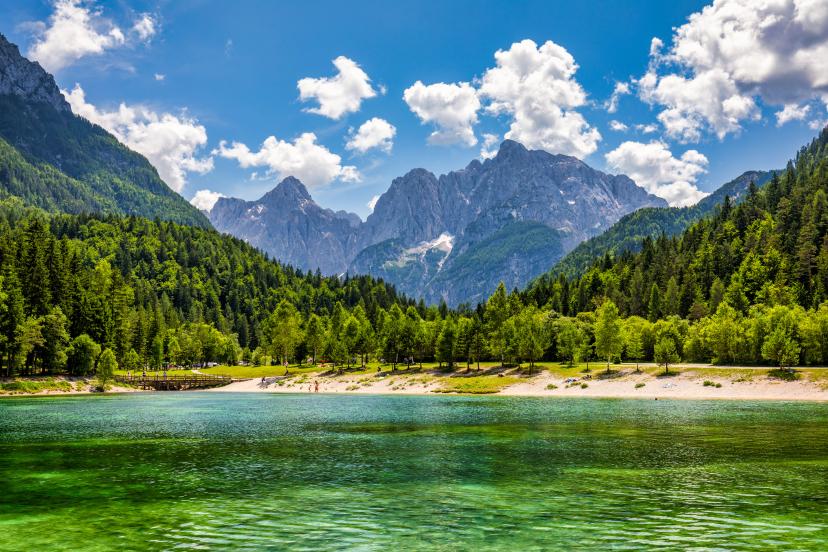
Triglav National Park
Slovenia’s only national park spans 880 km² of the Julian Alps and protects Mount Triglav, the nation’s 2,864 m peak and national symbol. A UNESCO Biosphere Reserve, it’s a landscape of glacial valleys, alpine lakes, and the emerald sources of the Soča and Sava rivers. Quiet roads and scenic climbs lead through Bohinj and the Soča Valley, offering cyclists pristine nature and classic Alpine views.

Matajur
Rising 1,641 m on the border of Slovenia and Italy, Mount Matajur offers sweeping views across the Soča Valley, the Julian Alps, and all the way to the Adriatic Sea on clear days. Its grassy slopes and open summit have long served as alpine pastures, while World War I left historic trails and memorials from the Isonzo Front. Today it’s a beloved cycling and panoramic viewpoint, combining gentle lower roads with a challenging final climb and a unique vantage point over two countries.

Robanov kot
A 5 km glacial valley in the Kamnik–Savinja Alps, Robanov Kot is protected as a Landscape Park and part of Natura 2000. Ringed by peaks like Ojstrica and Krofička, its floor of meadows and forests has been farmed since the 15th century by the historic Roban homestead. Quieter than nearby Logar Valley, it offers pristine alpine scenery, traditional mountain farms, and a peaceful escape into Slovenia’s highlands.
Karst & Mediterranes Slowenien
Im Südwesten erhalten Radurlaub in Slowenien einen mediterranen Flair. Das Karstplateau ist berühmt für seine Höhlen, unterirdischen Flüsse und Rotweingärten, während die Adriaküste Jahrhunderte venezianischen Einfluss widerspiegelt. Fügen Sie sonniges Wetter, terrassierte Hügel und historische Städte hinzu, und diese Region zeigt eine ganz andere Seite Sloweniens. Erleben Sie die Region während unserer charakteristischen Radtour von den Alpen zur Adria.
Zentral-Slowenien
Zentral-Slowenien verbindet kulturelle Höhepunkte mit einfachem Zugang zur Natur. Ljubljana, mit seinen Cafés am Flussufer und Blick auf die Burg, ist die perfekte Basis für Erkundungen mit dem Fahrrad. Nahegelegene mittelalterliche Städte, bewaldete Plateaus und Kirchen auf Hügeln sorgen für Abwechslung und machen diese Region ideal für Slowenische Radurlaub, der städtische Entdeckungen mit ländlichen Fahrten ausbalanciert.
Erkunden Sie die Region auf unserer Tour Road Cycling Holidays oder Hidden Hills Fahrradtour, wenn Sie ruhige Bergweiden und Dörfer bevorzugen.
Die Karawanken
Die Karawanken erstrecken sich über 120 Kilometer entlang der Grenze zu Österreich und bilden eine natürliche Grenze zwischen Mitteleuropa und dem Balkan. Gipfel ragen über 2.000 Meter empor, während alpine Täler, Höhlen und Hochweiden die dramatische Landschaft prägen.
Was einst eine bewachte Grenze war, wird heute durch das traditionelle Leben der Schäfer und die Freizeit im Freien definiert – und seine langen, ruhigen Straßen machen es zu einem der besten Gebiete zum Radfahren in Slowenien.
Neugierig, es mit dem Fahrrad zu erkunden? Wir haben genau die Tour für Sie!
Südslowenien
Südslowenien ist von weiten Wäldern geprägt, darunter eines der größten Urwälder Europas. Der Kočevski gozd allein erstreckt sich über 500 Quadratkilometer und beherbergt Braunbären, Wölfe und Luchse. Während des Kalten Krieges waren große Gebiete hier geschlossene Militärzonen, was zur Erhaltung seiner Wildnis beitrug.
Heute ist es eine Region, in der Radferien in Slowenien, insbesondere für MTB-Fahrer, eine wildere Seite annehmen, mit wilden Trails durch tiefe Wälder und einem Fokus auf unberührte Natur.
Bringen Sie Ihr Herz in den Urwäldern mit unseren Single Trails MTB Ferien zum Pumpen.
Über die Grenze: Italien & Kroatien
Viele Radurlaube in Slowenien gehen nahtlos in das nahegelegene Italien und Kroatien über und bieten noch mehr Abwechslung auf der Tour. In Italien können Radfahrer die Dolomiten, ein UNESCO-Weltkulturerbe, erkunden, dessen legendäre Pässe den Giro d’Italia geprägt haben. In Kroatien bietet die Halbinsel Istrien römisches Erbe, Dörfer auf Hügeln und trüffelreiche Wälder.
Für diejenigen, die alles erleben möchten, bieten wir Reisen durch mehrere Länder an, die das Beste der Region präsentieren. Zu den Optionen gehören die Ultimate Cycling Across Slovenia & Croatia, die Legendary Dolomites and Slovenia Road Challenge und die Road Cycling Slovenia, Italy & Croatia Tour—jede kombiniert unvergessliche Landschaften, ikonische Anstiege und die reiche Kultur dreier Nachbarländer.
Planen Sie Ihre Radreise in Slowenien
Fühlen Sie sich von den Landschaften Sloweniens inspiriert? Durchstöbern Sie unsere vollständige Auswahl an Radtouren in Slowenien oder kontaktieren Sie uns, um Ihre eigene Tour zu planen.
.jpg&w=3840&q=75)

Lokale Experten
Unsere professionellen Radführer kennen das lokale Terrain und sind darauf trainiert, diese einmalige Gelegenheit sowohl sicher als auch angenehm zu gestalten.

Problemlos
Wir kümmern uns um Reiserouten, Unterkünfte und alles andere, um das Sie sich lieber nicht kümmern möchten, damit Sie einen sorglosen Urlaub genießen können.

Vollständig anpassbar
Flexibilität ist unser zweiter Vorname - egal, ob Sie mehr oder weniger wollen, oder einfach nur mehr als gewöhnlich, wir machen es möglich.

Buchen Sie mit Vertrauen
Wir sind ein finanziell abgesichertes Unternehmen, das vollständig haftet und versichert ist, so dass Ihr Geld sicher ist und Sie mit Vertrauen reisen können.

Unschlagbarer Support
Unser 24/7-Kundenservice ist der Ort, an dem wir unsere Leidenschaft zeigen, indem wir Ihr Wohlbefinden zu unserer obersten Priorität machen.





